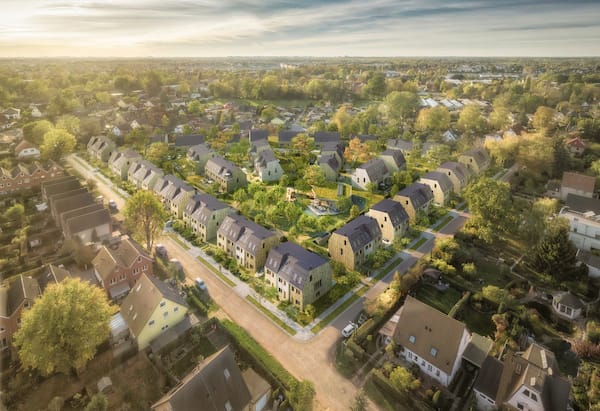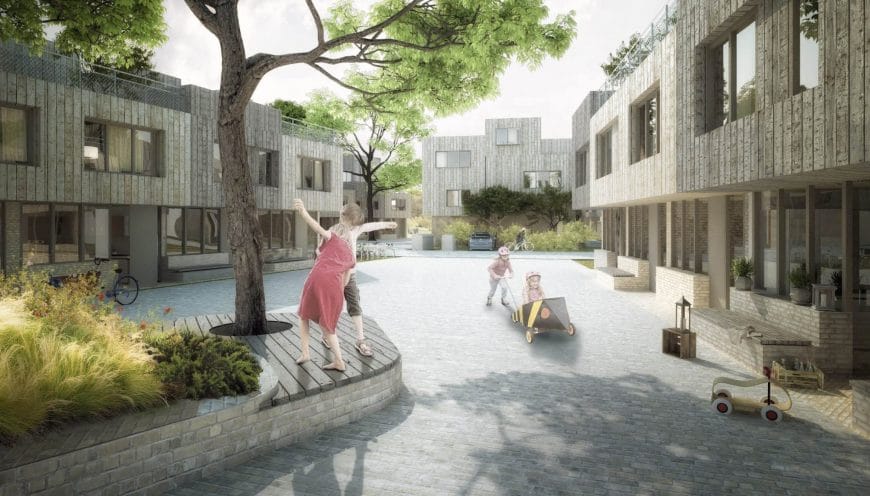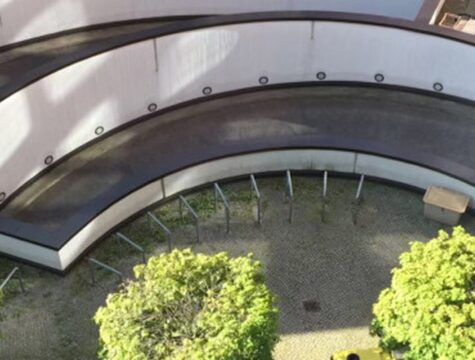Architecture, engineering and the construction industry face an unprecedented and urgent need to be at the forefront of systematic change towards a circular economy. Accelerating the transition to a circular built environment, together with EIT Climate-KIC, Circular Berlin spoke to Andrea Klinge to obtain key insights on the circular economy in the construction sector in Berlin and beyond.

Andrea Klinge, a highly qualified architect, is a specialist in sustainable construction and works as a senior architect for ZRS Architekten, where she established the research department. Her research focuses on the use of natural building materials that improve indoor environmental quality, but also on circular construction.
It is a shortened version of the article. The full interview is published by Recycling Magazine (International Edition).
Speaking about the circular economy in the construction industry, how do you address this topic?
In our construction projects we aim to apply circular design strategies, but focus on the application of timber and earthen materials. Earthen materials are intrinsically circular, whereas timber offers great potential for circular construction due to its lightweight nature and the possibility to make dry connections. If recycled materials are either not available or too costly, we focus on the use of local resources to minimise transportation.
Another major focus area is the development of a suitable material approach to enable low-tech construction. Through the use of hygroscopic materials, e.g. earth, timber and natural fibres, we can create more sustainable and healthier buildings. In comparison to conventional construction materials, natural materials are able to buffer higher amounts of moisture and help reduce mechanical ventilation. This strategy can improve the indoor environmental quality of buildings, as relative humidity levels are more stable, ranging between a healthy 40% to 60% in winter and buildings are less prone to overheating in summer. This is also a highly relevant topic in current times with the outbreak of coronavirus.
Both aspects are important for the development of sustainable building systems: lowtech construction through the reduction of building services, resource consumption and environmental impact when building.
How do you see the current practical applications and limitations of circular economy in your work? To what extent is circular economy feasible in construction?
Constructing with reused or recycled building materials leads to even higher planning and construction costs and extended timelines that are not acceptable for every client. Relevant infrastructure is still lacking. In addition, the processing and handling of recycled materials is currently still more time-consuming in comparison to raw materials, due to the innovative nature of the topic. Additional research and practice, but also the increasing cost of virgin materials will balance this challenge in the near future. Life cycle costing (LCC) that reflects holistically environmental impacts therefore becomes highly relevant in order to promote the circular economy

One of the closest to circular construction is a new construction project at Gut Buchholz – New Eco-quarter located in Berlin- Pankow. The residential scheme comprises 83 two- to three-storey terraced houses that will be constructed from timber in combination with earthen materials (optional) and straw.

The Tierpark Administration Building project in Berlin-Lichtenberg showcases the principles of curricular construction for existing buildings. Due to the presence of harmful substances and also structural constraints, the existing façade components were replaced with a light, prefabricated, non-load-bearing timber façade system that meets current energy standards for new buildings. Internally, the main fit-out, e.g. walls and floor structures, were kept to the extent possible in order to minimise resource consumption.
Where should the starting point be to enable a circular economy in the construction sector?
Building partnerships: In order to successfully implement circular construction principles, it is important to have the support of like-minded project partners who promote sustainable construction
Policy and regulation: The shift to circular construction needs to start at the political level by developing and implementing sustainable regulatory frameworks.
Incentives: Financing models can provide better conditions for more sustainable construction projects.
Technological tools: One of the potential enablers of timber reuse and recycling is a technology-based hand tool, developed by the Fraunhofer Institute under the research project CaReWood, which enables the on-site analysis and identification of wood preservatives.
Raising awarenessBringing stakeholders together can raise awareness and help to disseminate knowledge. Mindfulness at the individual level is a key factor.
Read a full version of the interview and the insightful spring issue of Recycling Magazine (International Edition).
Learn more about Circular Construction-Ecosystem in Germany and read the full report “Berlin´s Circular Construction Ecosystem”






